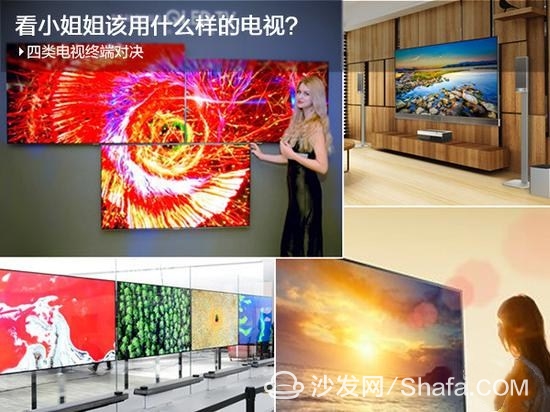
The source of influencing the viewing experience is television's performance on the screen. Currently, TVs on the market can be divided into four categories based on panels. The first category is the most widely used LED-backlit TVs, the second category is QLED TVs with even more extreme color performance, and the third category is OLEDs with excellent structure. TV, the fourth category is "non-screen" television, represented by laser television. Which of the four forms of TV terminals is the trend of the future TV? Or what TV is more suitable for a particular scenario? In this issue, let’s talk about the various features and application scenarios of the four types of TV terminals and see what you need most.
QLED - the best performance vector for HDR
If you have a passion for HDR movies and believe that SDR movies can't stand it, QLED TV will be your best choice. The performance of HDR is actually a three-dimensional concept. It is inseparable from the color and brightness, and the industry calls it the color rendering volume. It breaks our intrinsic thinking about display effects - if you leave the brightness and talk about color, it becomes a false proposition.
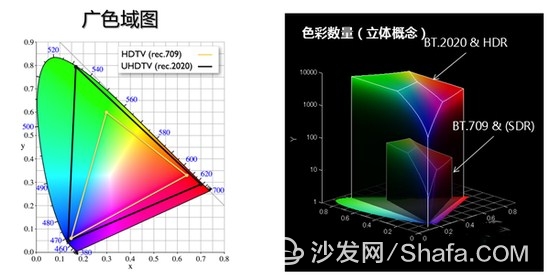
The human eye is very powerful. During the day, you can see a wealth of color information and brightness information. After the pupil is enlarged at night, it is also very sensitive to the capture of light. To use a display device to simulate the world observed by the human eye, you must have three key elements: sharpness, high dynamic range (HDR), and color.
For example, watching a picture of a volcanic eruption, or watching a video of a volcanic eruption on a typical display device, there is no way to experience the kind of grandeur that comes to the scene. The reason is that although there is an accurate color of the volcanic eruption on the photo, if the color is not displayed at the proper brightness, there is no way to give you a real feeling.

QLED TV adopts the traditional backlight mode, increasing LED power consumption and adopting more bile backlight technology, can make the brightness of the TV higher. Due to the higher brightness, the effective contrast of the QLED is also improved a lot. If we do not watch TV in a pure black environment, we would even think that QLED has higher contrast than OLED.
Color QLED also demonstrated the strength of the ultra-wide color gamut. Quantum dots have an interesting property. By changing the size of a quantum dot, it can affect the wavelength difference of its emission, and thus affect the color of its emission. When the size is small, blue light is emitted, and the size becomes larger and greener, yellowish green, then orange, and finally red. This interesting feature makes quantum dots an endorsement of high color gamut. The same material can meet the needs of different color gamuts.
To sum up, for the need to "color volume" to support HDR movies, playing with QLED is the most appropriate.
OLED - the coolest print display
The development of OLED has been obvious to all of you for these years, and there is a great trend to replace LCD in the future. If it is completely replaced, it will be really difficult. After all, LCD has taken a very deep root in all walks of life. However, in the future, OLED will have a class ability to become the ultimatum of LCD. That is the printed OLED.
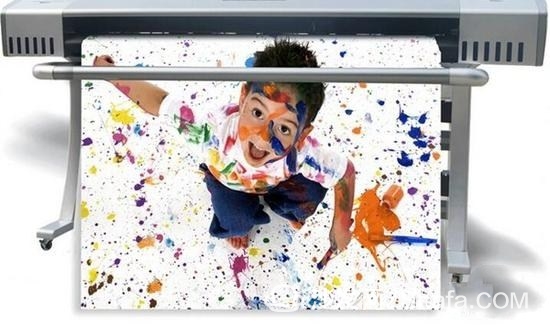
Currently, giants such as BOE, TCL, Samsung, and LG are competing to develop an emerging display technology. In principle, it also belongs to OLED technology, but it is generally recognized as an effective way to solve the high cost of OLED and achieve a large area. We all know that OLEDs have self-luminous properties, using very thin organic material coatings and glass substrates. The printing OLED is the use of advanced printing equipment, the organic materials like newspapers, "printed" on the glass substrate, than the traditional evaporation technology, have a higher production efficiency.
How do you "print" like a newspaper? We all know that when printing a pattern on a T-shirt, there are two types of ink-jet printing and screen printing. Printing OLEDs are also divided into two types: inkjet printing and screen printing. The current mainstream direction is focused on inkjet printing. The inkjet printing apparatus has a plurality of print heads, each having a plurality of micro-nozzles, and the red, green, and blue luminescent material solutions are respectively accurately deposited in the isolation column grooves of the ITO glass substrate, and the solvent is volatilized to form nano-thin layers. Constitute light pixels.
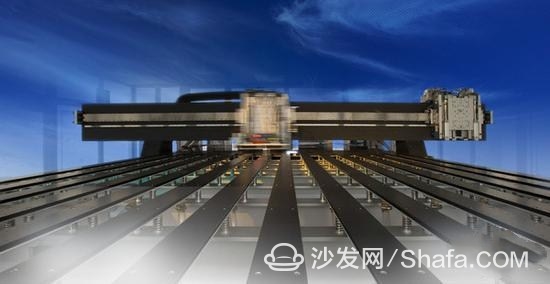
The nozzle is made of a special piezoelectric ceramic. The size of the droplet can be precisely controlled by controlling the voltage applied to the ceramic and the length of time to regulate the thickness of the luminescent layer. Since this is a complete digital technology, it does not need any Processing. Through such a printing method, it is expected to significantly reduce the cost of OLED production, prolong the life of OLED materials, and at the same time improve the yield of large-size screens.
The important reason why printing OLEDs are so valued is that it is closely related to flexible displays. Think about printing screens like printing newspapers. Can the screen be bent as casually as newspapers? It's fun to think about it.
LED - Micro LED Attack Giant
Recent discussions on the Micro LED have been pushed to the spotlight. It is rumored that Apple Watch may abandon its use of OLEDs, adopt the Micro LED panel, and apply it to the new iPhone.
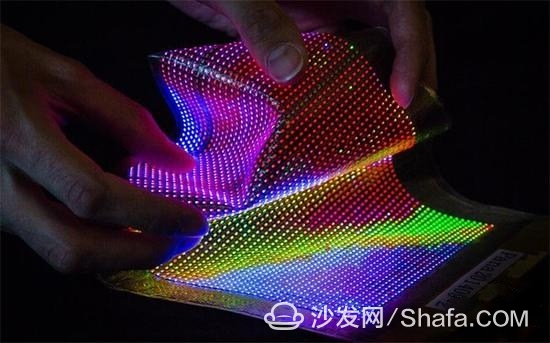
Micro LED technology is to reduce the LED to less than 100μm, only less than 1% of the size of an ordinary LED. Through the massive transfer technology, Micron-level RBG three-primary Micro LEDs are transferred to a glass substrate to form various sizes of Micro LED panels.
Due to some technical defects, such as the lifetime problem, it is difficult for OLEDs to completely replace LCD technology. OLEDs must reduce white screens or highlights in order to achieve power savings. Their wide color gamut characteristics have little difference between amateur QDs. The Micro LED technology is a technology that really makes LCD completely change its face.
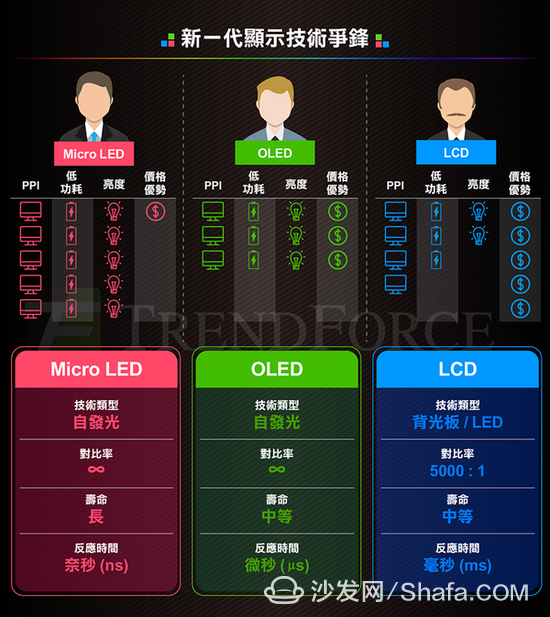
The Micro LED is a miniaturization of the LED array. Each Micro LED can be viewed as a pixel. When the module is smaller, it can achieve higher brightness and ultra-high resolution, and the color saturation and reaction speed are improved. . Each pixel can be driven independently, and organic materials exhibit self-luminous characteristics in inorganic materials.
Of course, Micro LED also has many technical bottlenecks that need to be broken. The combination of such tiny LEDs and glass substrates and circuits has huge technical challenges, which also makes its high cost a barrier to technology diffusion. It takes a continuous iteration of the plant technology to expect Micro LED to officially go commercial.
Laser Display - Super Large Screen Solution
Although the above display technology can achieve good image quality, it is less shocking than the super-sized screen of a movie theater. Home large-screen solutions have traditional projection and laser television. Traditional projection has strict requirements on the spatial distance when it is arranged. If you want to get a bigger picture, you must have a longer distance. However, ultra-short focal projection breaks this limit.
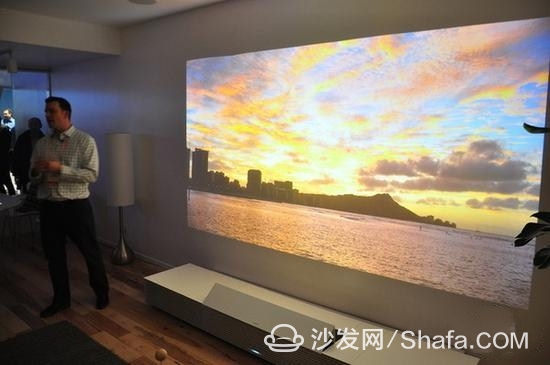
The projection ratio of an ultra-short focal projection can be up to 0.6, which means that you can project 100 frames at a projection distance of 1.2 meters. The reflective ultra-short-focus projection can project 100 frames at a distance of 0.1-0.5 meters. In this case, the biggest advantage of this technology is to save space, especially now that the rent is so expensive. If you want to buy a normal projector and you want to shoot 100, you still have to worry about the size of the room.
Not only is it more space-efficient, most of the ultra-short focal projectors now have a reflective design, and the light source is more laser-based. After the reflection on the screen forms a complete image, it enters the person's eye. The advantage of this is that the light that finally enters the human eye is very soft and less irritating to the eye than the LCD TV. And the laser light source has a higher brightness and a longer life.
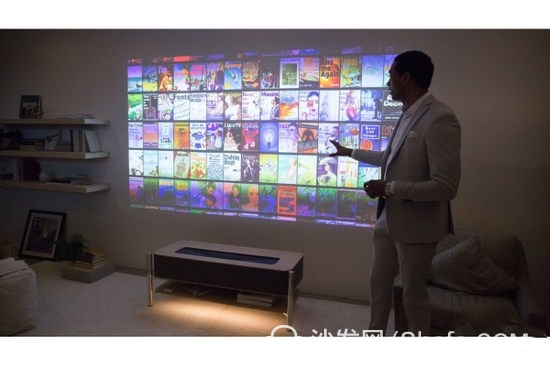
Of course, ultra-short-focus projection is not a panacea. The most obvious short board is the distortion of the screen. The ultra-short focus and distortion are the dead ends of the shadow. In the actual display, the middle part of the display screen is generally relatively clear, and there are some blurs around the edges. As for the phenomenon of earlier brightness and color unevenness has been greatly improved, the current ultra-short focus technology using laser light source, has made a great breakthrough in color brightness. The physical resolution is even up to the 4K level.
Summary: Four kinds of display technologies, but also represent the future direction of the color TV terminal. QLED TV can be said to be the closest to us, and the price is relatively the cheapest; OLED TV has amazing quality performance, but also the best carrier for printing display technology; Micro LED is still in the laboratory stage, but its revolutionary display features , is the best representative of the future display technology; laser display provides the best value solution for large-screen viewing, large-screen shock is the most temptation to reject the temptation.
Class 2 Power Adapter 9V,Class 2 Power Adapter 120Vac 60Hz,Class 2 Power Ac Dc Adapter,Class 2 Power Adapter 9V 2A
ShenZhen Yinghuiyuan Electronics Co.,Ltd , https://www.yhypoweradapter.com
